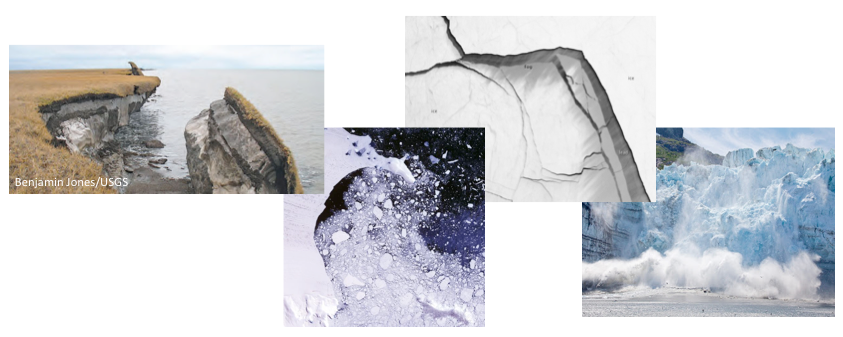Interesting EventsHere we describe recent, rapid changes in the cryosphere that are newsworthy. They may or may not be significant in a climate context. |
 |
Record Low Great Lakes Ice Cover, Winter 2023-2024
Jeff Key, 15 March 2024
As of 1 March 2024, ice cover on the Great Lakes (USA) is significantly below average for this time of the year. Peak ice cover on the Great Lakes is typically around 53%. In mid-February this year, it was 2.7%. Lake Erie and Ontario are at or tied with their historic lows, with both being essentially ice-free. Figure 1 is a VIIRS satellite image over the Great Lakes on 24 February 2024. Compare that with the ice cover about 10 years earlier (6 March 2014, chosen for minimal cloud cover) in Figure 2.

Figure 1: Suomi-NPP Visible Infrared Imaging Radiometer Suite (VIIRS) satellite image from 24 February 2024 showing the Great Lakes. (From the NOAA JSTAR Mapper)

Figure 2: Suomi-NPP Visible Infrared Imaging Radiometer Suite (VIIRS) satellite image from 6 March 2014 showing the Great Lakes. (From the NOAA JSTAR Mapper)
Figure 3 puts this in the historical context. The record low ice cover is a result of an anomalously warm winter in the Midwest U.S.

Figure 3: Winter ice cover in the Great Lakes for 2024 (through 15 February) and past years, 1973-2023. (From NOAA climate.gov.)
In the News:



